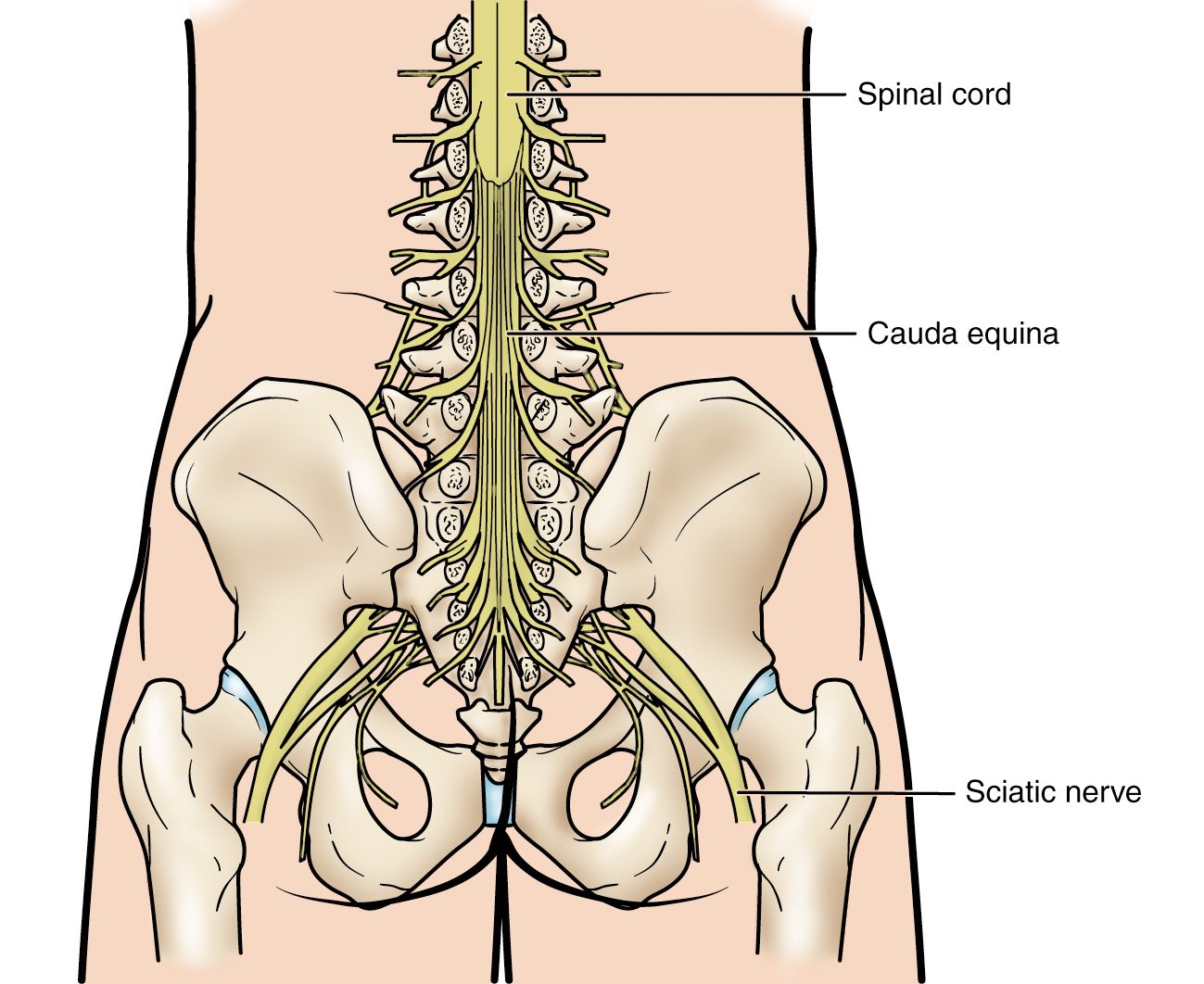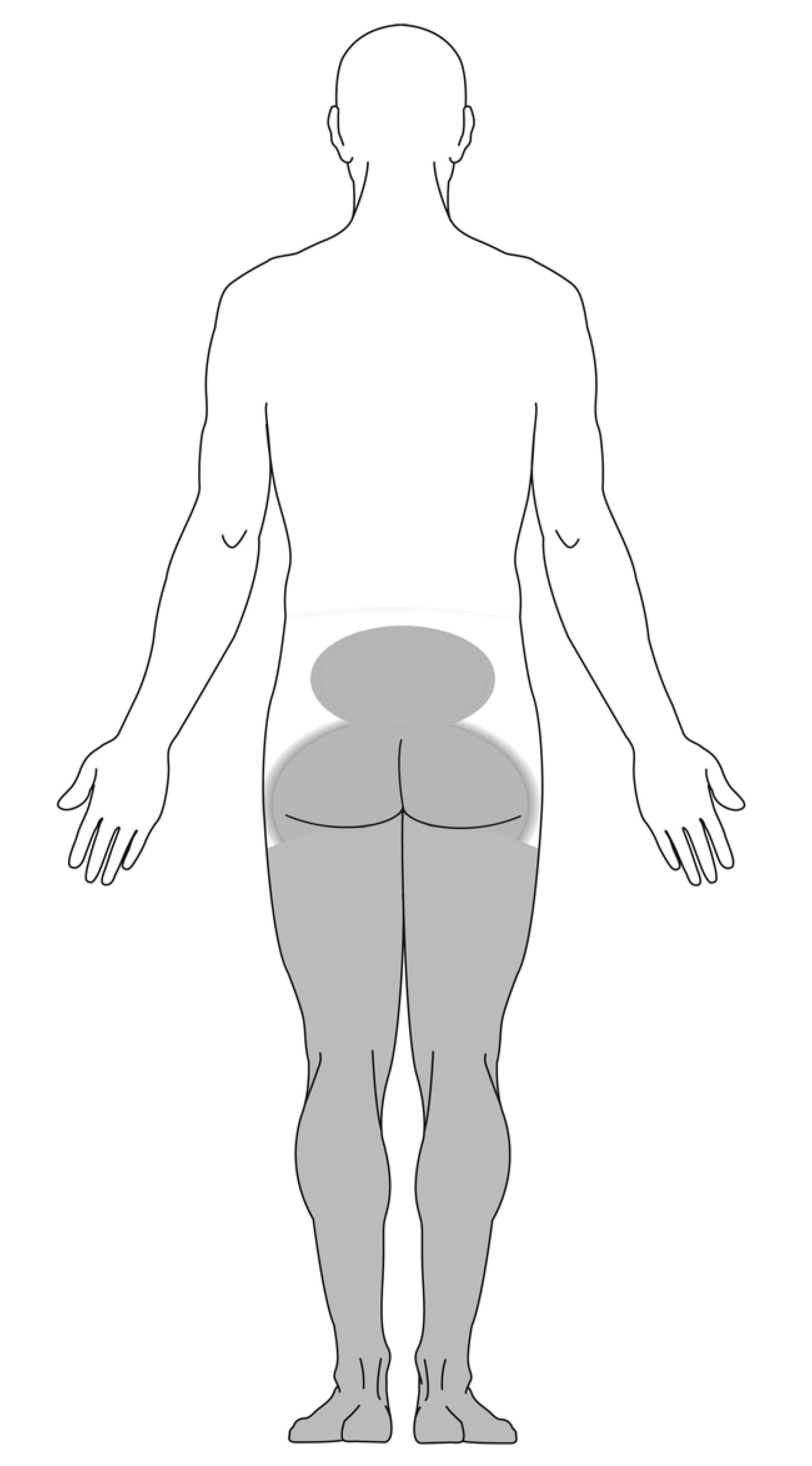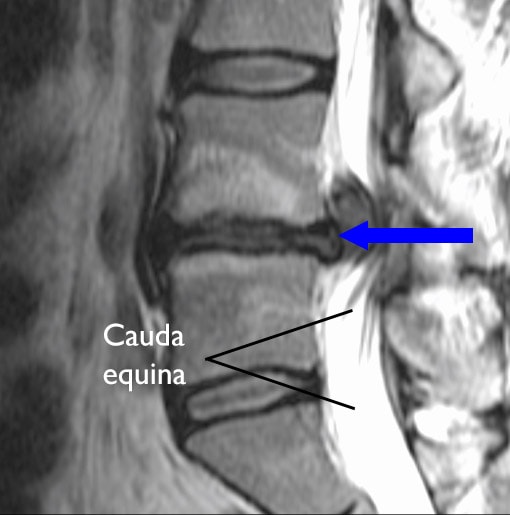Diseases & Conditions
Cauda Equina Syndrome
Although leg and back pain are common and usually go away without surgery, cauda equina syndrome, a rare disorder affecting the bundle of nerve roots (cauda equina) at the lumbar (lower) end of the spinal cord, is a surgical emergency.
An extension of the brain, the spinal cord and lumbar nerve roots send and receive messages to and from the pelvic organs and lower limbs. Cauda equina syndrome occurs when the nerve roots in the lumbar spine are compressed (squeezed), cutting off sensation and movement. The nerve roots that control the function of the bladder and bowel are especially vulnerable to damage.
Cauda equina syndrome is a surgical emergency. Without immediate treatment to relieve pressure, it can result in a range of problems, including:
- Permanent paralysis
- Impaired bladder and/or bowel control
- Loss of sexual sensation
- Chronic pain
Even with immediate treatment, some patients may not recover complete function; earlier treatment does, however, offer the best outcomes for cauda equina syndrome.
Causes
Cauda equina syndrome may be caused by:
- A herniated disk
- A tumor
- An infection
- A fracture
- Lumbar spinal stenosis (narrowing of the spinal canal in the lower back)
Symptoms
Although early treatment is required to prevent permanent problems, cauda equina syndrome may be difficult to diagnose. Symptoms vary in intensity and may evolve slowly over time.
See your doctor immediately if you have:
- Bladder and/or bowel dysfunction, causing you to:
- Retain urine (you are unable to urinate)
- Be unable to hold urine (incontinence, or leaks)
- Severe or worsening problems in the lower extremities, including loss of or altered sensation (numbness, tingling, burning) in these parts of your body:
- Between the legs (the perineum, or area between the anus and either the scrotum or vulva)
- Over the buttocks
- In the inner thighs or back of the legs
- In the feet/heels
Doctor Examination
To diagnose cauda equina syndrome, your doctor will evaluate your medical history, perform a physical examination, and order multiple imaging tests.
Medical History and Physical Examination
Your doctor will:
- Ask you about your overall health, when the symptoms of cauda equina syndrome began, and how they impact your activities.
- Assess stability, sensation, strength, reflexes, alignment and motion. You may be asked to stand, sit, walk on your heels and toes, bend forward, backward and to the sides, and lift your legs while lying down.
- Possibly check the tone and numbness of anal muscles with a digital rectal exam. To conduct the exam, the doctor will insert a lubricated gloved finger into the rectum.
- Possibly order blood tests, depending on the results of your health history and physical exam.
- Possibly obtain a postvoid residual volume. This is a test where ultrasound is used to measure the amount of urine left in the bladder after you urinate. Abnormally large amounts of retained urine can be due to a variety of reasons, including cauda equina.
Imaging Tests
Your doctor may order X-rays, magnetic resonance imaging (MRI) scans, and computerized tomography (CT) scans to help assess the problem.
Treatment
If you have cauda equina syndrome, emergent (immediate) surgery is usually recommended to relieve the pressure on the nerves. The surgery may prevent pressure on the nerves from reaching the point at which damage is irreversible.
The specific procedure your surgeon recommends will depend on the specific underlying cause of your cauda equina syndrome.
Living with Cauda Equina Syndrome
Nerves can take different amounts of time to heal, and surgery may not repair permanent nerve damage. However, if this occurs because of cauda equina syndrome, you can learn how to improve your quality of life.
Some suggestions:
- In addition to medical personnel, you may want to get help from an occupational therapist, social worker, continence advisor, or/or sex therapist.
- Involve your family in your care.
- To learn all you can about managing the condition and talk with other people who have firsthand experience, you may want to join a cauda equina syndrome support group.
Managing Bladder and Bowel Function
Some bladder and bowel function is automatic, but the parts under voluntary control may be lost if you have cauda equina syndrome. This means you may not know when you need to urinate or move your bowels, and/or you may not be able to eliminate waste normally.
Some general recommendations for managing bladder and bowel dysfunction:
- Empty the bladder completely with a catheter 3 to 4 times each day.
- Drink plenty of fluids and practice regular personal hygiene to prevent urinary tract infections.
- Check for the presence of waste regularly and clear the bowels with gloved hands.
- You may want to use glycerin suppositories or enemas to help empty the bowels.
- Use protective pads and pants to prevent leaks.
Contributed and/or Updated by
Peer-Reviewed by
AAOS does not endorse any treatments, procedures, products, or physicians referenced herein. This information is provided as an educational service and is not intended to serve as medical advice. Anyone seeking specific orthopaedic advice or assistance should consult his or her orthopaedic surgeon, or locate one in your area through the AAOS Find an Orthopaedist program on this website.









